Abstract
A total of 24 strains of fermentative coryneform like bacteria isolated from clinical specimens form two distinct groups which have been designated Centers for Disease Control (CDC) fermentative coryneform groups 1 (13 strains) and 2 (11 strains). The phenotypic characteristics of group 1 were similar to those of a previously described CDC group designated A-4, with the major differentiating characteristic being the inability to hydrolyze esculin. Major differences in cellular fatty acid composition between CDC groups 1 and A-4 were also observed. The branched-chain fatty acids 14-methylhexadecanoate and 12-methyltetradecanoate, which account for more than 80% of the total acids of group A-4, were not detected in cells of group 1 strains. Groups 1 and 2, which have similar cellular fatty acid compositions, can be differentiated on the basis of fermentation of xylose, mannitol, lactose, sucrose, and melibiose by group 1 but not by group 2. The sources of isolation of the strains of both groups varied. Only group 1 strains were associated with eye infections.
Full text
PDF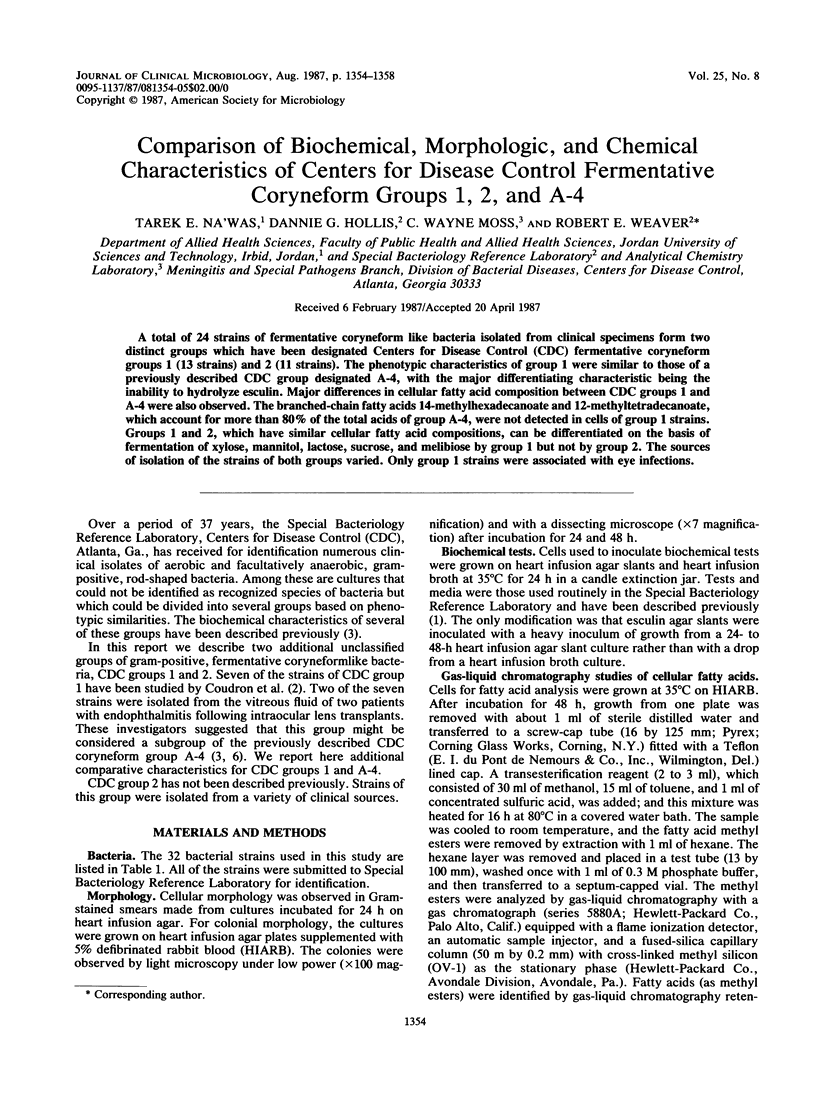
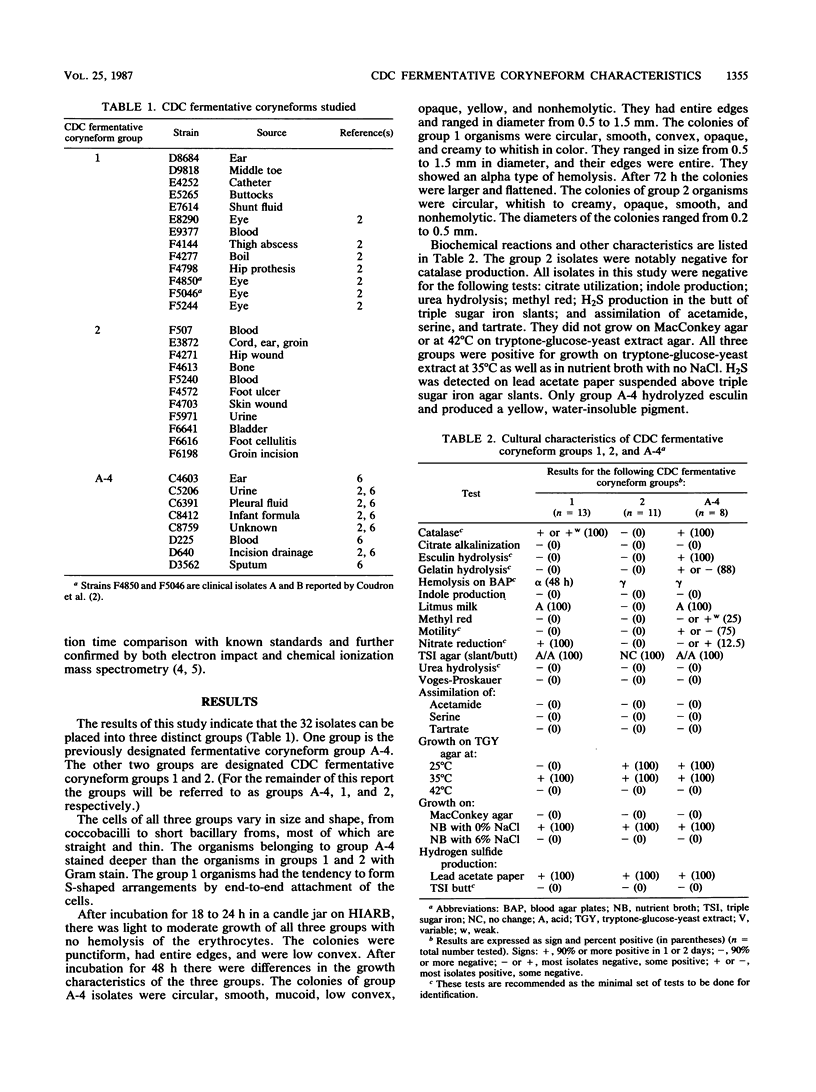
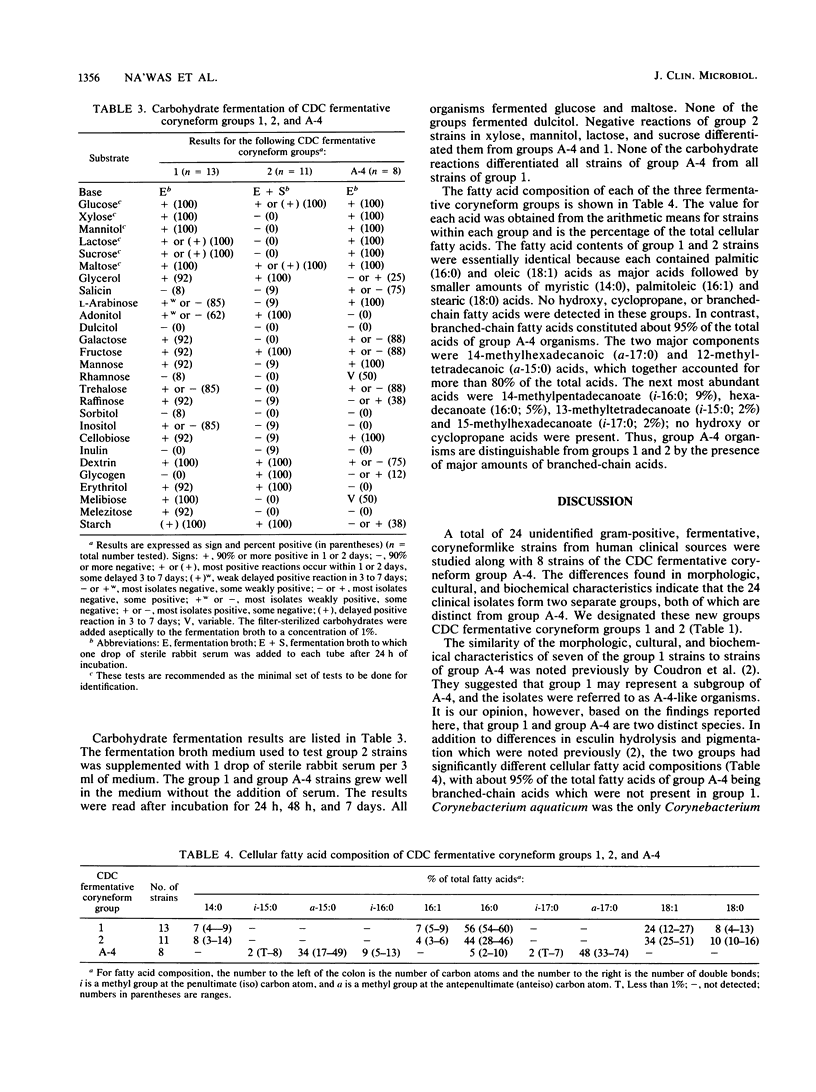
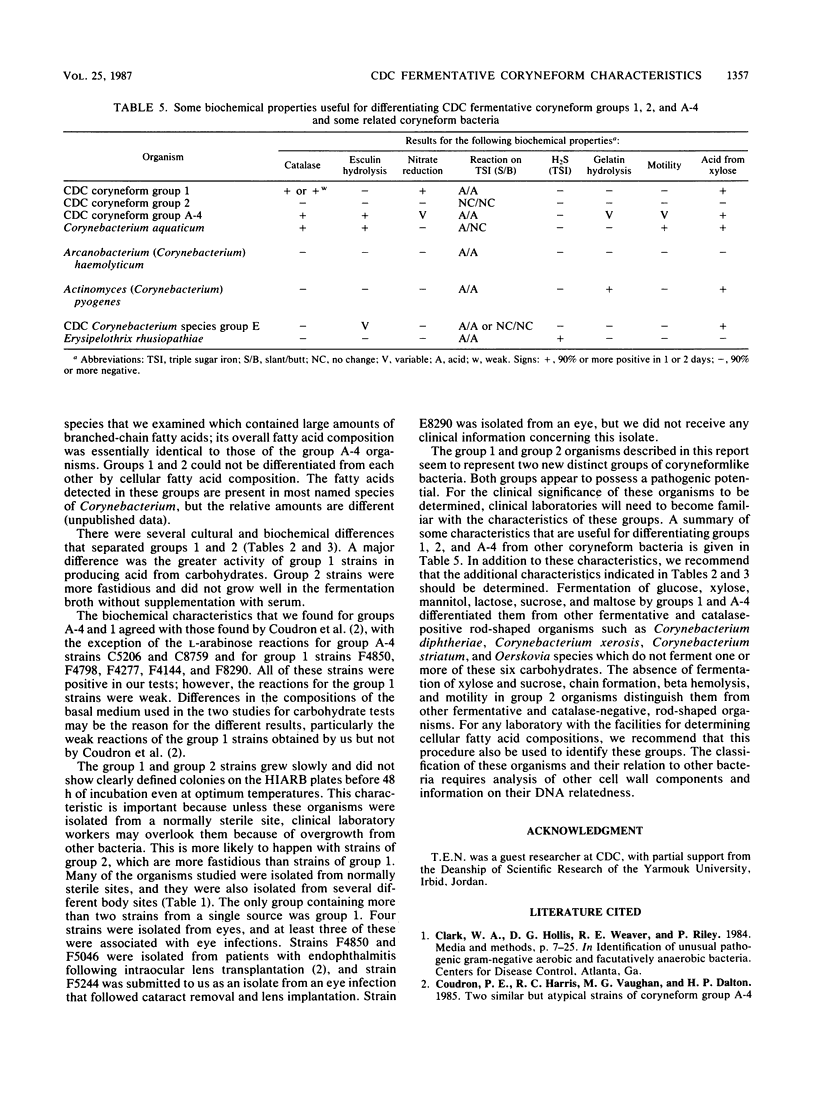
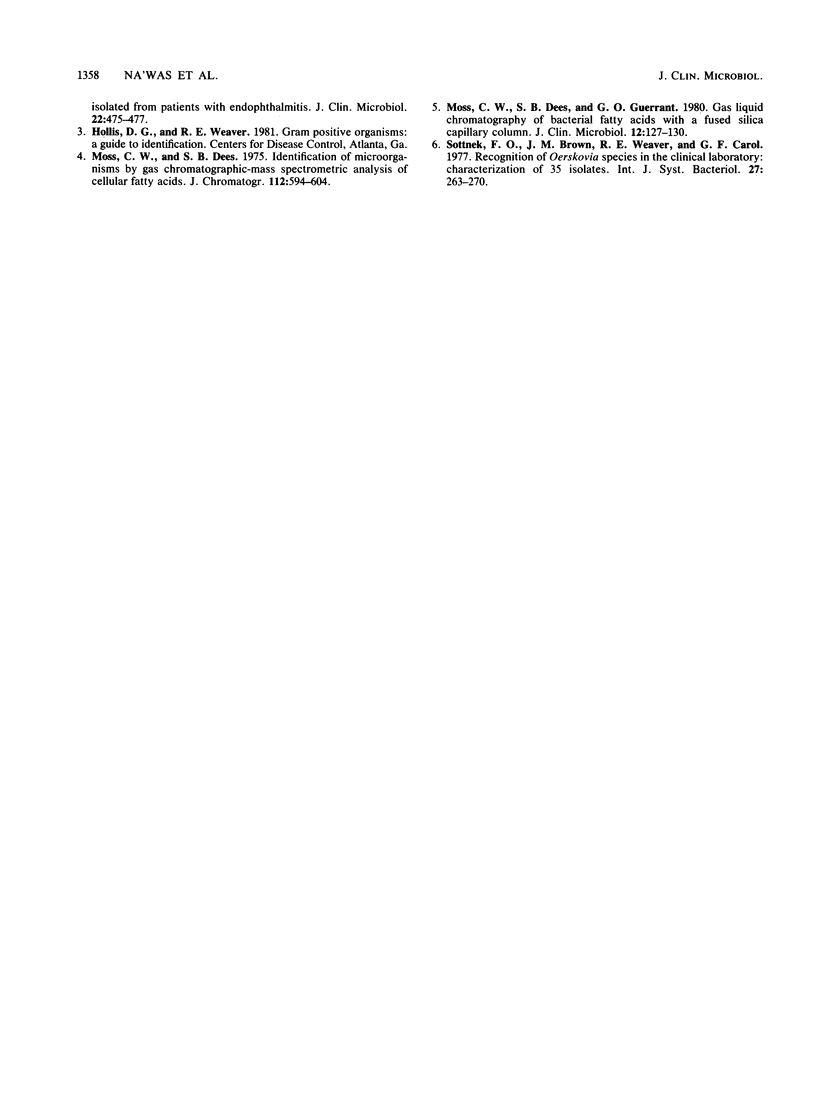
Selected References
These references are in PubMed. This may not be the complete list of references from this article.
- Moss C. W., Dees S. B., Guerrant G. O. Gas-liquid chromatography of bacterial fatty acids with a fused-silica capillary column. J Clin Microbiol. 1980 Jul;12(1):127–130. doi: 10.1128/jcm.12.1.127-130.1980. [DOI] [PMC free article] [PubMed] [Google Scholar]
- Moss C. W., Dees S. B. Identification of microorganisms by gas chromatographic-mass spectrometric analysis of cellular fatty acids. J Chromatogr. 1975 Oct 29;112:594–604. doi: 10.1016/s0021-9673(00)99988-6. [DOI] [PubMed] [Google Scholar]


